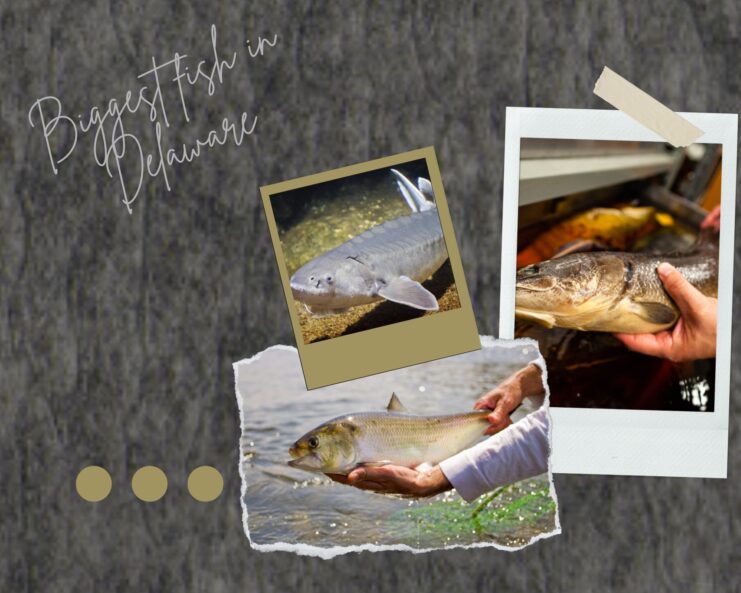Delaware, the second smallest state in the U.S., holds a unique appeal for fishermen and marine biologists alike. Despite its size, it boasts an impressive variety of fish species, thanks to the Delaware Bay, Delaware River, and Atlantic Ocean. Among these species, some stand out due to their impressive size and weight.
In this article, we’ll set sail to discover the five biggest fish in Delaware, explore their habitats, their significance in the ecosystem, and even some interesting facts that might surprise you!
5. Atlantic Sturgeon (Acipenser oxyrinchus oxyrinchus)
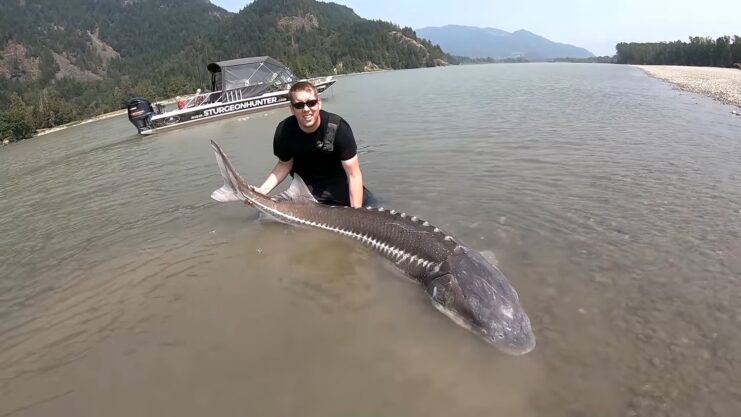
The Atlantic Sturgeon is a prehistoric marvel. Sporting a distinctive armored body and a shark-like tail, it’s a relic from the days when dinosaurs roamed the Earth. The fish has a unique, elongated snout and barbels (whisker-like feelers) that help it detect prey in the murkiness of the river or bay bottom.
Size: Can grow up to 14 feet and weigh more than 800 pounds.
Habitat: Delaware River, Delaware Bay.
Due to factors such as overfishing, habitat loss, and water pollution, Atlantic Sturgeons are listed as endangered under the Endangered Species Act. Their presence or absence serves as a valuable indicator of the health of the aquatic ecosystem.
Fun Fact: Atlantic Sturgeons are known to leap out of the water, much like dolphins. The reason for this behavior remains a mystery.
4. Bluefin Tuna (Thunnus thynnus)
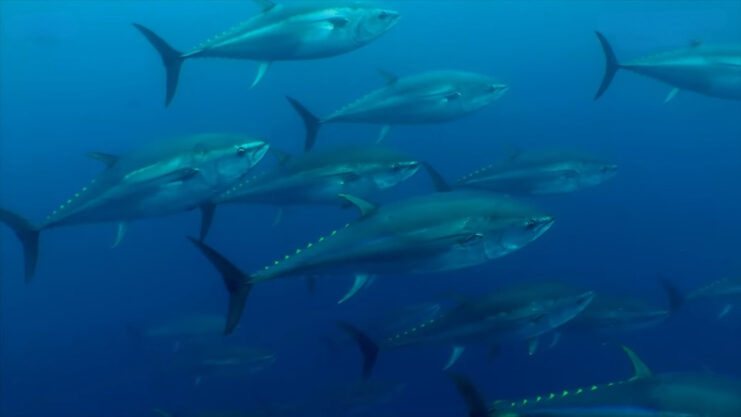
The Bluefin Tuna is an oceanic giant, renowned for its incredible speed and power. A torpedo-shaped body, metallic blue on top and silvery below, makes the Bluefin Tuna one of the ocean’s premier predators.
Size: Can exceed 10 feet and weigh more than 1,000 pounds.
Habitat: Atlantic Ocean, particularly off the Delaware coast.
Bluefin Tuna are highly sought after for sushi and sashimi in Japan, making them one of the most valuable fish in the world. Sadly, this high demand has led to overfishing, and they are currently labeled as “endangered.”
Fun Fact: Bluefin Tuna can generate heat in their muscles, allowing them to venture into colder waters, a rare ability for a fish.
3. Sand Tiger Shark (Carcharias taurus)
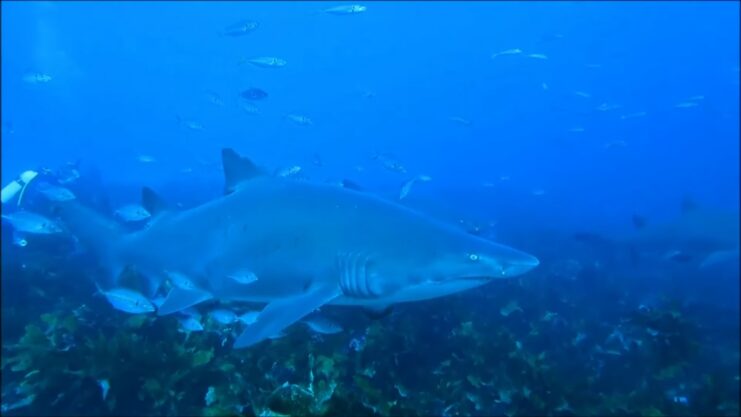
With a broad, flattened snout and a mouth filled with long, protruding teeth, the sand tiger shark might appear menacing. However, despite their fierce appearance, they are relatively docile and rarely pose a threat to humans.
Size: Typically 6.5 to 10.5 feet and weigh 200-350 pounds.
Habitat: Coastal waters of the Atlantic Ocean.
Sand Tiger Sharks are essential for maintaining the balance of marine ecosystems. They prey on various species, ensuring no single species dominates the ecosystem. However, they’re also vulnerable to factors such as fishing pressures and habitat destruction.
Fun Fact: Sand tiger shark embryos engage in in-utero cannibalism, where the strongest embryo eats its siblings before birth.
2. Striped Bass (Morone saxatilis)
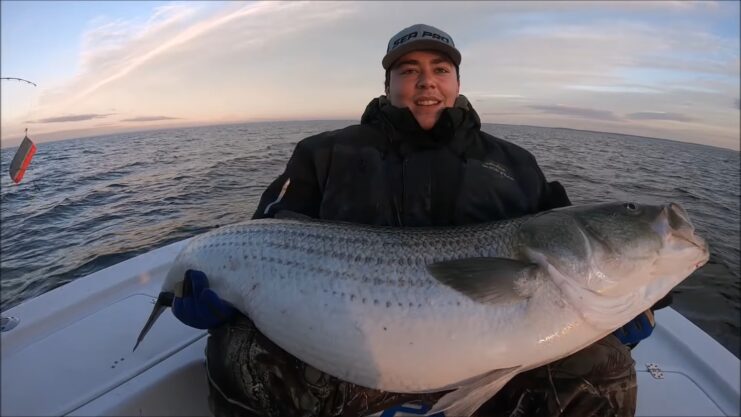
Striped Bass, also known as “rockfish,” have sleek bodies adorned with dark horizontal stripes running from their gills to the base of their tail. They are adaptable fish that can thrive in both fresh and saltwater environments.
Size: Commonly 2-5 feet and weigh 10-30 pounds, but some specimens can exceed 6 feet and weigh over 100 pounds.
Habitat: Both fresh and salt water, particularly in the Delaware River and Delaware Bay.
Striped Bass hold economic and ecological importance. They are a favorite among recreational fishermen and are vital for controlling populations of smaller fish, ensuring a balanced ecosystem.
Fun Fact: Striped Bass can make a unique “croaking” sound using their swim bladder.
1. Summer Flounder (Paralichthys dentatus)
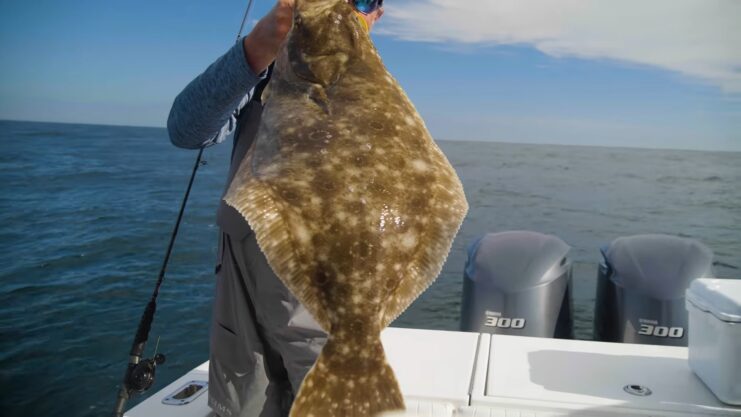
The Summer Flounder, commonly known as “fluke,” has a flat body, both eyes on one side, and a white underside. Their top side can change color to blend in with the ocean floor, making them masters of camouflage.
Size: Typically 1.5-2.5 feet and weigh 3-8 pounds, but some specimens can exceed 3 feet and weigh over 20 pounds.
Habitat: Sandy bottoms of the Atlantic Ocean near Delaware’s coast.
Summer Flounder plays a vital role in their environment by controlling crustacean populations. They are also commercially significant, being a popular catch for both commercial and recreational fishermen.
Fun Fact: Flounders are born with an eye on each side of their head. As they grow, one eye migrates to the other side, making them look quite peculiar!
For those who seek more than just fishing adventures, Delaware has a wealth of camping spots that offer breathtaking natural beauty.
FAQs
Why is the Atlantic Sturgeon considered a “prehistoric marvel”?
The Atlantic Sturgeon is referred to as a “prehistoric marvel” because it has been around since the time of the dinosaurs. Its unique armored body and ancient lineage make it one of the oldest fish species still in existence today.
What makes the Bluefin Tuna one of the ocean’s premier predators?
The Bluefin Tuna’s streamlined, torpedo-shaped body allows it to swim at incredible speeds, making it an efficient hunter. Additionally, its ability to generate heat in its muscles enables it to venture into colder waters, expanding its hunting grounds.
Are Sand Tiger Sharks dangerous to humans?
Despite their intimidating appearance with protruding teeth, Sand Tiger Sharks are generally docile and are not considered a significant threat to humans. However, as with any wild animal, it’s essential to exercise caution and respect their space.
Why is the Striped Bass also known as “rockfish”?
The name “rockfish” originates from the Striped Bass’s preference for rocky substrates, especially during spawning. They often inhabit areas with rocky bottoms or structures, which has led to this colloquial nickname.
How does the Summer Flounder camouflage itself?
The Summer Flounder has the unique ability to change the color of its top side to match the ocean floor. Combined with its flat body, this makes it almost indistinguishable from its surroundings, allowing it to ambush prey effectively.
Why is it essential to promote sustainable fishing practices for these species?
Many of these fish, like the Atlantic Sturgeon and Bluefin Tuna, are facing threats due to overfishing, habitat loss, and other human-induced factors. Sustainable fishing ensures that these species can maintain healthy populations, ensuring ecological balance and allowing future generations to enjoy the wonders of Delaware’s aquatic life.
Conclusion
Delaware’s waters offer more than just a glimpse into the vast diversity of aquatic life. They tell a story of evolution, adaptation, and the intricate balance of life. These five fish species not only amaze with their size but also with their roles in maintaining ecological balance.
As we marvel at these giants, let’s remember to promote sustainable fishing practices and conservation efforts to ensure that future generations can witness the majesty of these aquatic behemoths.
Related Posts:
- Idaho’s Top 5 Biggest Fish Species - Aquatic Giants
- The Mobile Revolution: 10 Exclusive Tech Wonders in…
- Biggest Fish in Arizona: Top 10 Largest Fish Species…
- Finding the Best Camping Spots in Delaware Has Never…
- Venomous Snakes in Delaware: A Closer Look at the…
- Biggest Fish in Arkansas: In Search of the Titans

